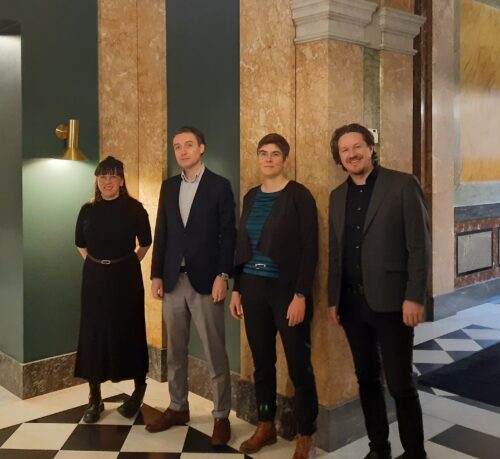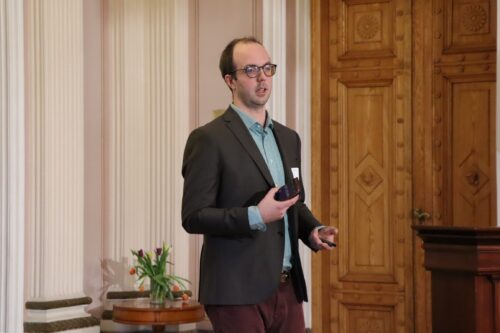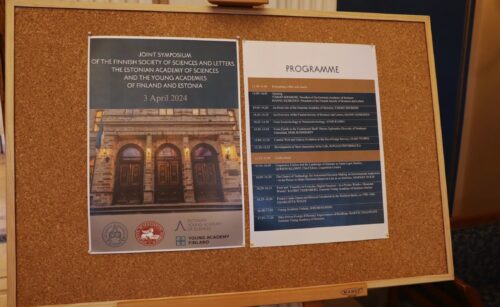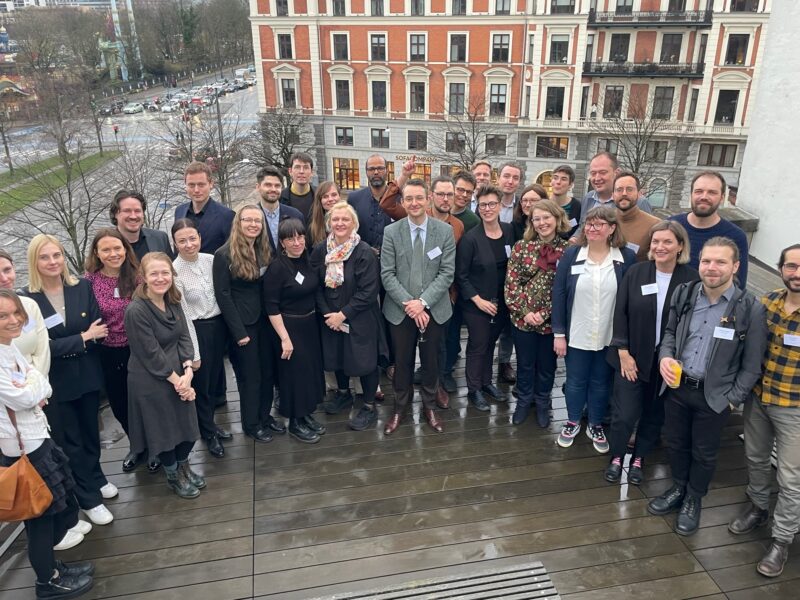
The beginning of April was an exceptionally international month for the Young Academy Finland. While coordinators Riikka Hiltunen and Kim Krappala and board members Lasse Lehtonen and Velma Aho attended a meeting of the Nordic and Baltic Young Academies in Copenhagen, board member Jeremias Berg presented the activities of the Young Academy Finland at a joint symposium of the Finnish Society of Sciences and Letters, the Estonian Academy of Sciences and the Young Academies of Finland and Estonia.
At the meeting of the Baltic and Nordic Young Academies in Helsinki in the summer of 2022, there was a strong desire to start organising similar meetings annually. Oslo followed Helsinki in September 2023; now, in 2024, it was Copenhagen. Ten participants came from Denmark, two from Sweden, four from Finland, eight from Norway, two from Estonia, seven from Latvia, and four from Lithuania. In April 2024, at the Danish Academy of Sciences, the theme was the planetary boundaries.
Professor Katherine Richardson from the University of Copenhagen was invited to speak on the planetary boundaries. Richardson is a PhD in oceanography who has made a name for herself for her work on the Planetary boundaries framework. Richardson’s team has created a 9-component framework to understand better the impacts and limits of human impact on the planet. The experienced presenter kept her audience throughout his 45-minute key note presentation. The keynote talk was followed by a panel discussion by Richardson, Siddharta Sareen (University of Stavanger), and Daniel F. Dreesen (Partner at Green Behavior).
After the panel discussion, the members of the Young Academies were randomly divided into 7 working groups: 1) Accountability 2) Inequality 3) Authority 4) Attention 5) Translation 6) Digitalisation 7) Reforestation. The purpose of the groups was to brainstorm ideas on each theme during the two-hour workshop. The activity was intended to lead to some concrete outcome, such as a joint statement by the Young Academies. The discussion on the themes was lively and fruitful.
However, at times, the group work drifted into a meta-discussion about the ultimate purpose of the meetings of Young Academies meetings and the ways to achieve the desired objectives. Most participants agreed that the main benefit of the meetings was getting new ideas from other Young Academies’ approaches. For example, the Danish Young Academy has been awarding the Best Research Environment prize for three years now. The Swedish Young Academy produced a guide for foreign researchers to the Swedish academic world. This idea was also originally the brainchild of the Dutch Young Academy. In addition, Norway and Lithuania had initiated their own version of the Finnish Meet a Researcher service, which we had introduced in earlier years of the Young Academies meetings. These are just a few examples. Every Young Academy is doing great work with young scientists and on the impact of science in society.

The meeting concluded with a group discussion on the future of the Young Academies’ meetings and ideas that next year’s host, Estonia, can take away from the meeting. It is hoped that the meetings will continue to be a forum for exchanging ideas. Creating concrete outputs, such as formal joint statements, was not entirely ruled out but was seen as requiring more co-creation before, during, and after the meeting. It was also noted that the creation of new ideas should take into account as much as possible the background and specific expertise of the participants. Discussions highlighted the importance of creating the right environment and using different discussion tools to create something new. “If co-creation is fun, we can quickly come up with something concrete and interesting”. With these words of Andreas Hougaard Laustsen-Kielv from the Danish Young Academy, we wish Estonia a good preparation for the 2025 meeting of the Baltic and Nordic Young Academies.
The Tallinn symposium was attended by around 20 participants from Finland and 20 from Estonia, but due to the overlap of events, the number of young participants was lower. During the meeting, the mutual wish to increase cooperation between the Estonian and Finnish youth academies of science was discussed.



